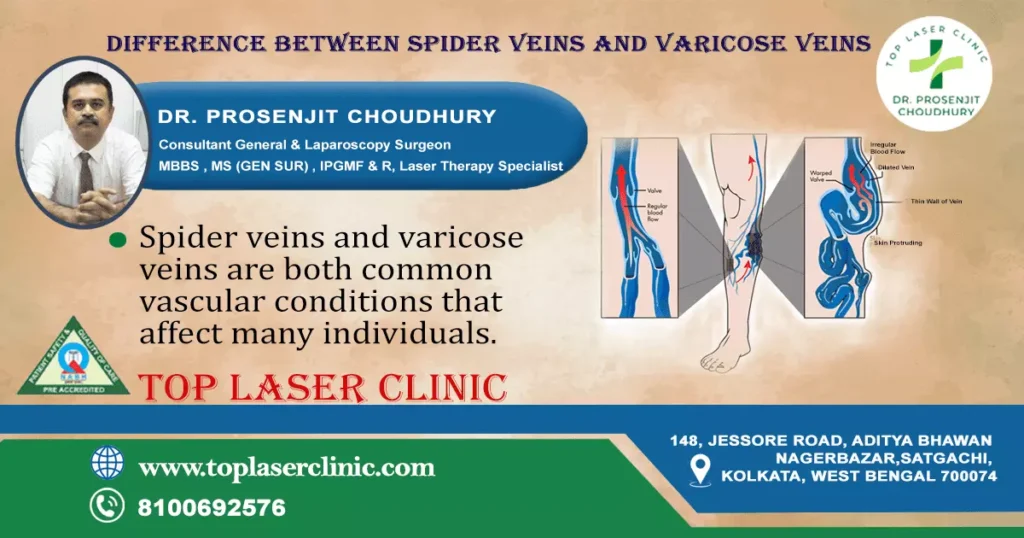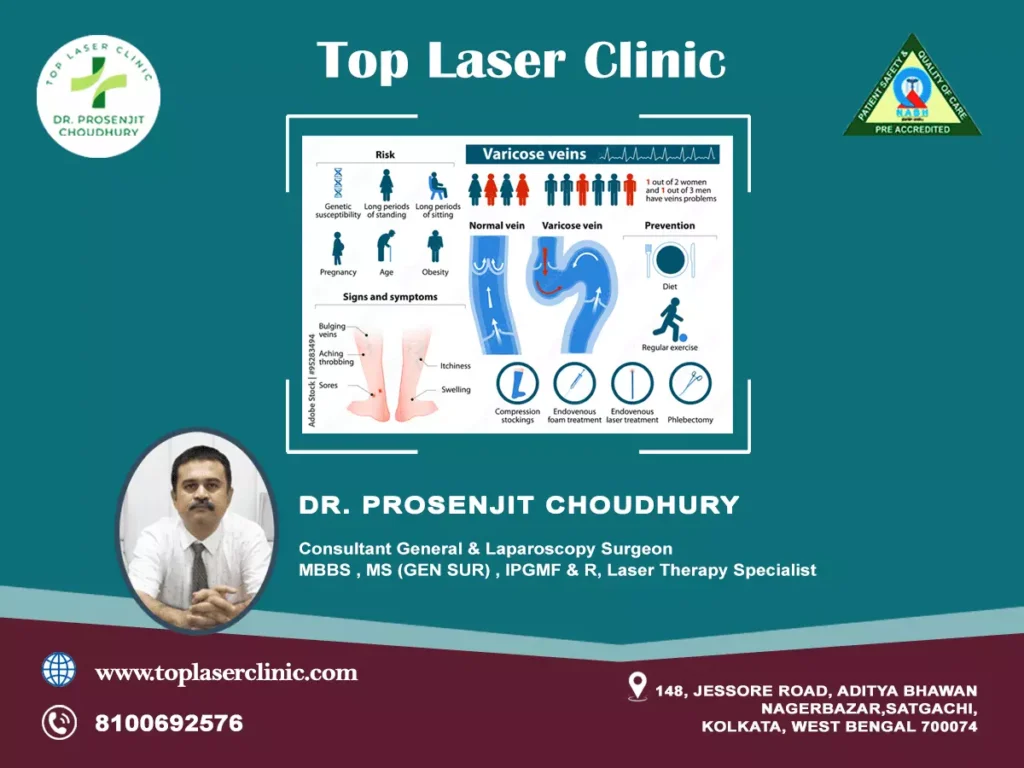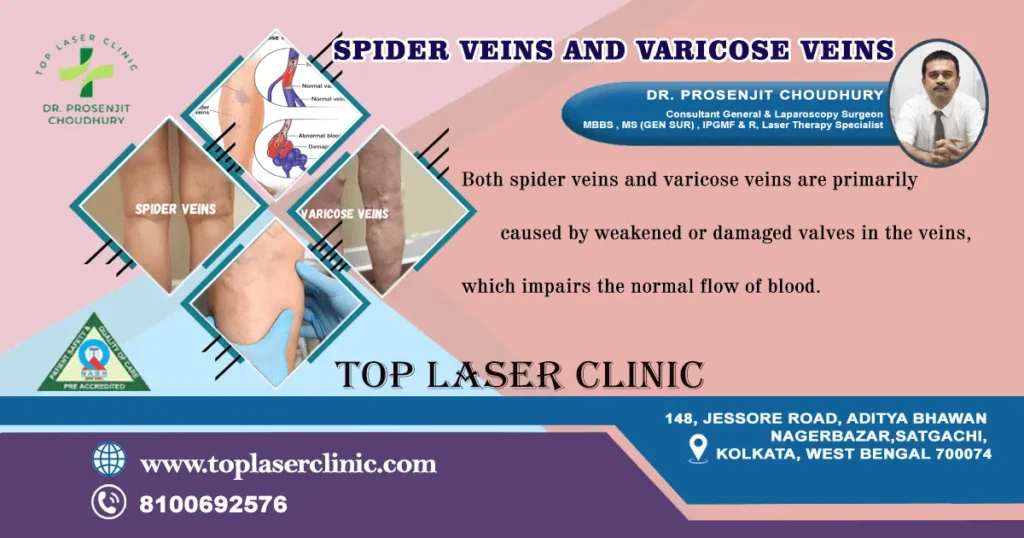
Spider veins and varicose veins are both common vascular conditions that affect many individuals. There are some key differences between Spider Veins and Varicose veins. Spider veins, also known as telangiectasias in medical term or broken blood vessels, are small dilated blood vessels that appear close to the surface of the skin. They are typically red, blue, or purple in color and appear as thin lines or web-like clusters. Spider veins are usually less than 1 millimeter in diameter and do not protrude above the skin.
Comparison of spider vein and vericose vein

Furthermore, varicose veins are larger and more prominent. They are swollen and twisted veins that often appear bulging or raised above the surface of the skin. Varicose veins are usually blue or dark purple in color and can cause discomfort, pain, and a heavy sensation in the legs. They are typically larger than spider veins, measuring more than 3 millimeters in diameter.
Both spider veins and varicose veins can be cosmetically bothersome, but varicose veins are more likely to cause symptoms such as pain, aching, and swelling in the legs. Additionally, varicose veins are often associated with other signs of chronic venous insufficiency, such as edema, skin changes, and ulcers.
Cause of spider vein and vericose vein
Both spider veins and varicose veins are primarily caused by weakened or damaged valves in the veins, which impairs the normal flow of blood. Factors that contribute to the development of these conditions include genetics, age, hormonal changes, obesity, pregnancy, prolonged standing or sitting, and a history of blood clots.

While both spider veins and varicose veins are vascular conditions that affect the appearance of the legs, they differ in size, prominence, and symptoms. In the realm of vascular conditions affecting the lower extremities, spider veins and varicose veins are frequently encountered. Spider veins and varicose veins are both types of venous disorders that affect the appearance of the legs.
Sclerotherapy and laser treatment
Sclerotherapy and laser treatment are commonly used to treat both spider veins and varicose veins. Fortunately, there are non-surgical treatment options available for both spider veins and varicose veins. Sclerotherapy and laser treatment are non-surgical options that can effectively address both spider veins and varicose veins. These treatments work by targeting the affected veins and causing them to collapse or fade away.
Sclerotherapy
Sclerotherapy is a minimally invasive procedure that involves injecting a solution directly into the affected veins, causing them to scar and ultimately close off. This treatment is commonly used for spider veins and smaller varicose veins. This procedure is generally well-tolerated and has a high success rate in reducing the appearance of spider veins and smaller varicose veins.
Additionally, sclerotherapy is a preferred treatment method for early varicose veins that have not yet progressed to a more severe stage. It is important to note that sclerotherapy may require multiple treatment sessions for optimal results, and some veins may not completely disappear.
Laser treatment
In addition to sclerotherapy, laser treatment is another non-surgical option for treating varicose veins. Laser treatment uses focused laser energy to target and heat the affected veins, causing them to close off and fade away. This treatment is particularly effective for larger varicose veins and can help improve both the cosmetic appearance and symptoms associated with these veins.
Furthermore, a conservative approach may be recommended for those with mild symptoms or small varicose veins. This approach involves lifestyle changes, such as regular exercise, weight management, elevation of the legs, and wearing compression stockings to alleviate symptoms and slow down the progression of varicose veins.
Non-surgical treatment options such as sclerotherapy and laser treatment have emerged as effective methods for addressing both spider veins and varicose veins. They offer patients a minimally invasive alternative to surgical procedures, with less downtime and fewer risks.